The ancient writers of the bible liked to portray all of their neighbors in a very negative way but undoubtedly the people they called the Philistines received more than their share of bed press. According to the bible the Philistines lived along the Mediterranean coast just to the east of the central highlands where the Hebrew people resided. Here they built five city-states, Gaza, Ashkelon, Ashdod, Ekron and Gath.
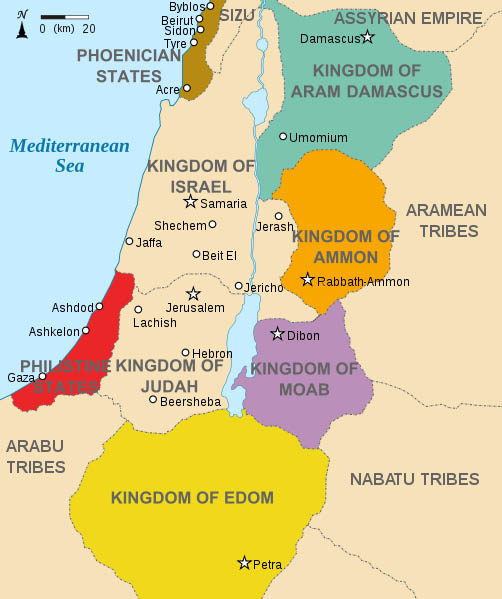
So who were the Philistines, the original Hebrew word Philištim simply means ‘people of Plešt’ whoever or whatever Plešt may have been. In the Bible however the Philistines are always treated as somehow different from the Canaanites or Moabites or Egyptians who were the Semitic neighbors of the Hebrews. Philistine names, like Goliath or Delilah, and the customs recorded in the bible also point to a non-Semitic origin.

The first clues to the origin of the Philistines were discovered during the early archaeological expeditions to Egypt in the 1840s. It was the Egyptologists Edward Hincks and William Osborn jr. who published the history of the Pharaoh Ramesses III and his battles with a ‘sea peoples’ that were also known by the name of Peleset (Philistines???). According to Egyptian inscriptions Ramesses III defeated these Peleset in a naval battle in the River Nile as well as a land battle along the eastern Mediterranean not far from the city of Gaza!! The inscriptions go on to state that Ramesses III later settled his captives in a series of ‘strongholds’.
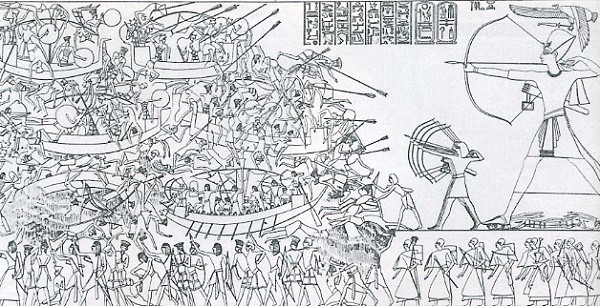
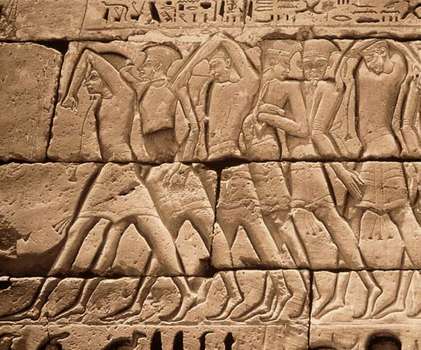
There are those who doubt that theory however stating that the similarity of names is hardly conclusive evidence. At the same time there is little archaeological support for a large-scale settlement of people in the region around Gaza in the 11th century BCE. Some scholars point to the use of the term ‘allophyloi’ (of another tribe) in the Greek translation of the bible, the septuagint to indicate that the Philistines were simply ‘non-Hebrews’, any enemies of the Hebrews. However the bible’s own descriptions clearly seem to refer to a definite ethnic group living in a definite place.
None of which gets us any loser to answering the question, who were the Philistines? If they weren’t Semites like the Hebrews or Egyptians or Canaanites, who were they linguistically and culturally? Where did they come from?
Based upon the clues in the bible and the Egyptian inscriptions the leading hypothesis is that the ‘sea peoples’ came mostly from the area around the Aegean Sea including Crete, Cyprus, the western coast of modern Turkey as well as Greece itself! The idea that a large force of bronze age Greeks might have invaded the southeastern Mediterranean coast fits also in with the well attested destruction of the Mycenaean cites at that time.
How can we ever know? That was three thousand ago and the records from that time are incomplete and not conclusive. Yes there is some archeological evidence such as the discovery at Ashkelon of Late Helladic IIIc Mycenaean pottery but the pottery could have come via trade. The evidence may lean toward an Aegean origin but how can we be sure?
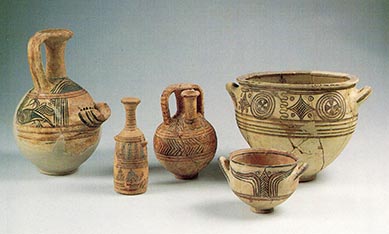
Perhaps the modern science of DNA testing can give us the answer. After all, we’ve all seen the ads telling us how DNA can reveal our ancestry. And remember how DNA was used to prove that the body found in a parking lot was actually England’s King Richard III. Couldn’t the same techniques be employed on skeletons from the right area and time period by archeologists?
In fact scientists have now done just that. In 2016 archeologists working at Ashkelon announced that they had discovered the first known Philistine cemetery, the culmination of 30 years of digging. The team, led by co-director Daniel Master of Wheaton College unearthed the remains of at least 108 individuals from which DNA was successfully removed from ten. The results of the DNA analysis clearly showed that the people buried in the cemetery were not related to any of the local ethnic groups but instead showed a strong European, probably a southern European relationship.
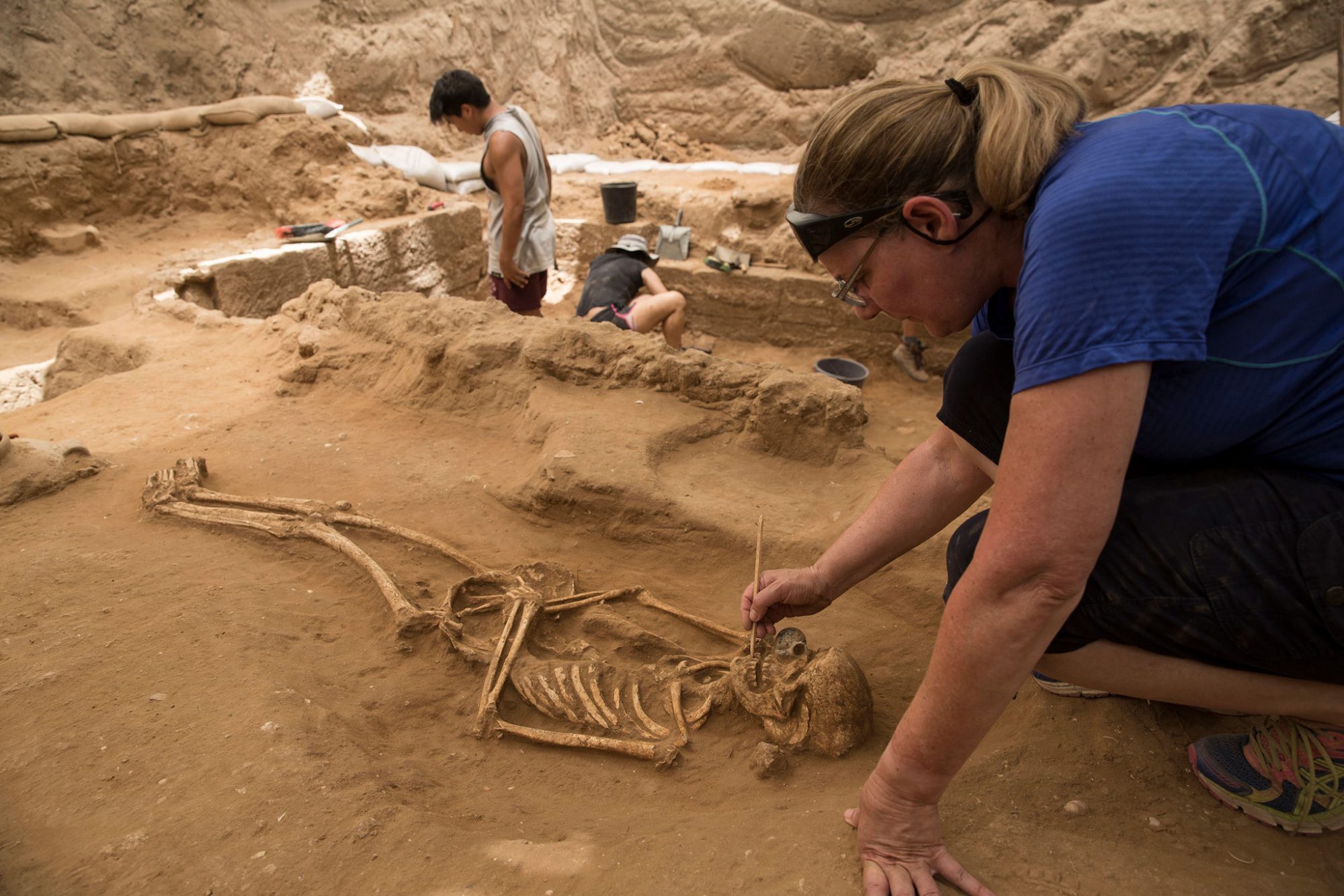
So it appears as if the hypotheses about an Aegean origin for the people know in the bible as Philistines was true. Goliath and Delilah may have been the descendants of Odysseus or Agamemnon or some of the other well-known characters of the Greek heroic age.
Think about that for a moment, could the ‘sea peoples’ have brought with them the stories that would become the later Greek myths. We could speculate that the Philistines told their stories about Hercules and the Hebrews responded by imagining stories of their strongman Samson. After all the first of Hercules twelve labours is strangling the Nemean lion whose hide was so tough no weapon could pierce it, while in the bible Samson’s first feat of strength is strangling a lion with his bare hands!!
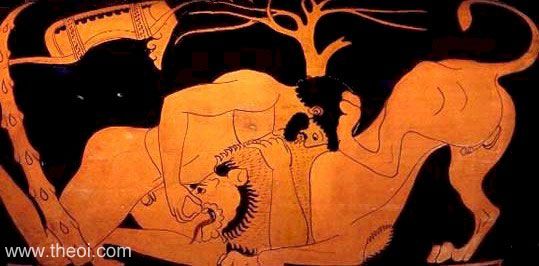

Could the story of Yahweh testing Abraham by demanding the sacrifice of Isaac, and then stopping the ritual once he was sure of Abraham’s faith, be the Hebrew answer to the Greek tale of the Goddess Artemis’s demand that Agamemnon sacrifice his daughter Iphigenia to her!

We may never know the answer to these questions, cultural cross connections leave few traces in the archeological record. One thing we can be certain of however is that since this is the Middle East the DNA results would quickly become politicized!
In fact Israeli Prime Minister Benjamin Netanyahu has already used the results to declare that since the Philistines came from Europe then the modern Palestinians have no claim to any of the lands of the Middle East. He is of course assuming that the Latin word Palaestina is the same as the Greek word Philistinoi which maybe true but is a subject of considerable contention among scholars.
I suppose the only thing we can really be sure of is that David didn’t defeat Goliath; they’re still fighting it out!!!

